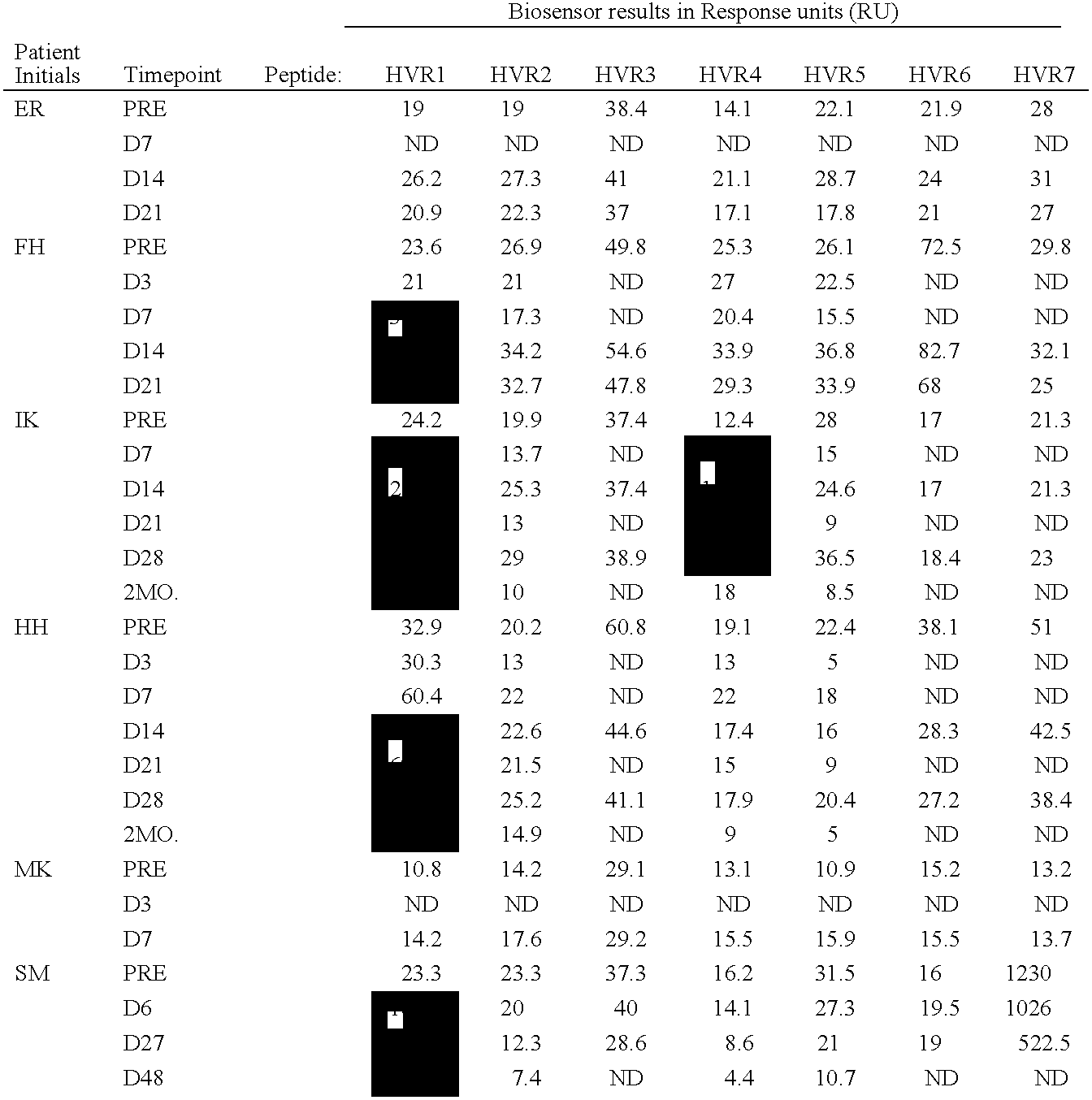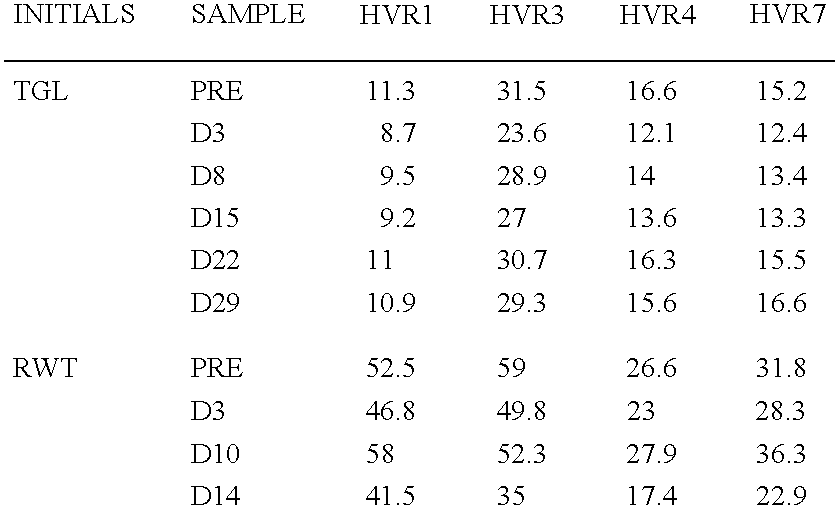Methods and reagents for the detection of antibodies to adenovirus
a technology of antibodies and reagents, applied in the field of methods and reagents for the detection of antibodies to adenovirus, can solve the problems of hammering attempts at adenoviral-mediated gene therapy, and being extremely wasteful
- Summary
- Abstract
- Description
- Claims
- Application Information
AI Technical Summary
Benefits of technology
Problems solved by technology
Method used
Image
Examples
example 1
Materials and Methods
1.1 Equipment and Materials
[0058]BIACORE 2000™ biosensor instrument, amine coupling kit (NHS / EDC), PDEA, sensorchip CM5 (research grade) and P-20 surfactant were all obtained from BIACORE™, Uppsala, Sweden. The HEPES, NaCl, EDTA, Tris and 0.2 μM filters were obtained from Fisher Scientific, Springfield, N.J. The cysteine was obtained from Aldrich, Milwaukee, Wis.
The carboxymethyldextran was obtained from Fluka Chemical Corp., Ronkonkoma, N.Y.
1.2 Peptide Design
[0059]Each peptide was designed to contain an amino-terminal cysteine residue available for thiol-coupling followed by a KGKG linker to each of the seven hypervariable region (HVR) sequences of adenovirus type 5 hexon. The linker is designed to function as a spacer, as well as to provide a localized positive charge around the cysteine; thus facilitating thiol-coupling by attraction to the negatively charged sensorchip matrix. Each of the seven unique hypervariable sequences corresponding to adenovirus type ...
PUM
| Property | Measurement | Unit |
|---|---|---|
| body weight | aaaaa | aaaaa |
| pH | aaaaa | aaaaa |
| pH | aaaaa | aaaaa |
Abstract
Description
Claims
Application Information
 Login to View More
Login to View More - R&D
- Intellectual Property
- Life Sciences
- Materials
- Tech Scout
- Unparalleled Data Quality
- Higher Quality Content
- 60% Fewer Hallucinations
Browse by: Latest US Patents, China's latest patents, Technical Efficacy Thesaurus, Application Domain, Technology Topic, Popular Technical Reports.
© 2025 PatSnap. All rights reserved.Legal|Privacy policy|Modern Slavery Act Transparency Statement|Sitemap|About US| Contact US: help@patsnap.com



